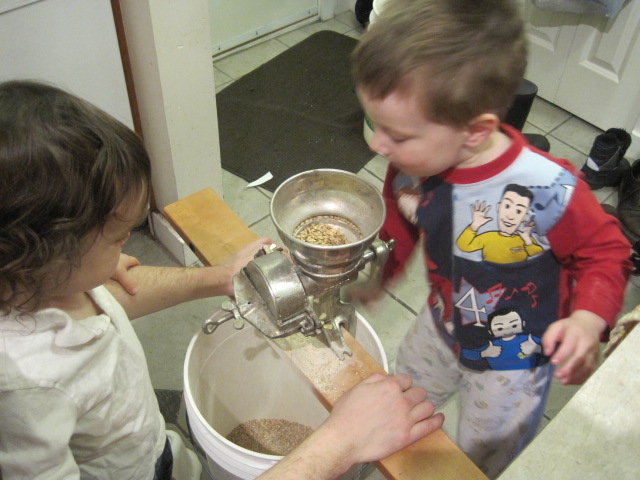Bropsa Bripsa Belgian Brown Bread
This is going to be an experiment. I wanted to try cultivating some yeast from a lovely gift, and I thought I'd go a little further than James and Steve did (they only got so far as finishing fermentation, not actually bottling it). And hey, I've got this 50 lb sack of grain to use up...
Originally, I was going to use some malt I'd wet roasted. However, this stuff turned out to have gone moldy...dang! So I went with the dry-roasted stuff instead, which smelled divine.
Recipe
Batch size: 2 gallons.
Grain bill:
- 3 lb Gambrinus ESB
- 0.5 lb Gambrinus ESB, dry-roasted @ 375F for 30 min
Hops:
- 0.25 oz Goldings @ 60
- 0.25 oz Goldings @ 30
- 0.5 oz Goldings @ 10
Yeast:
- 10 g Fleischman's bread yeast (1 gallon)
- Starter cultivated from Sara beer (1 gallon)...nope, scratch that -- Wyeast 1762
Prep
December 26, 2009: I got a bottle of Sara buckwheat beer, made by the Brasserie de Silenrieux, as a thank-you from Victor Scott and his wife for hosting their sites for so long. It was a lovely beer -- nice wheat flavour, not too strong on the Belgian aroma -- so I decided to cultivate the dregs and make a startef from it. We opened it on the 23rd, and I stuck the dregs back in the fridge with some plastic wrap over the mouth of the bottle.
I used my usual starter recipe, but this time I measured the gravity and holy cow, 1.060. I added half again as much water from the filter jug in the fridge and hoped and prayed.
Brew Day
The kids helped me grind the grain today:

(There's video, too!)
I brought 3.25 gallons of strike water to 175F/80C; higher than usual, but the bucket and grain had been outside. Mash temperature was 158F/70C. Yield was 2.875 gallons, 1.033 gravity, which'd put me at right around 75% efficiency...I think.
For the boil I decided to calibrate things a bit; I used the bit pot I've got, adjusted the lid so there was a 1cm gap, and after bringing it to a boil set the burner to 6.5 (units: degrees Kelvin per furlong-footnight). At the end, I found I'd only lost 2 quarts -- which is comparable, now that I check my notes, to what I lost last time.
The gravity at pitching time was 1.039, which was lower than I was aiming for (1.055 with a 2 gallon batch) but that's what you get for not boiling off as much as you expect. I pitched the bread yeast in one gallon jug, the starter in another (which turned the wort noticeably darker...weird; it's only 1.040!) and set them upstairs in the bedroom bathroom (which these days gets down to about 10C during the day, and maybe 7C at night).
Fermentation
The bread yeast took off quite strongly, of course. The Belgian didn't; after a couple days, I still didn't see any activity. I checked on the forums for ferm temps for Belgians, saw that most people let 'em go quite hot (80F/27C), so I moved it out into the bedroom on the 30th. The stick-on thermometer moved up to 17C, and by January 2nd 2010 I saw a fair bit of activity.
January 5, 2010: I was on crack; this was some kind of floating trub, not yeast. I gave it a day, then smacked a pack o' Wyeast 1762. I mixed up some starter (3 cups water, 0.25 cup liquid ME), threw it in, left it over night and it was going nicely; I pitched 1 pint, reserving 1 cup for future use as they say. That was early this AM; tonight it was going like a house on fire. Temp is around 23C right now; I may move it to a colder place in the house.
Bottling
January 16, 2010: Both batches reached the same gravity: 1.010, which makes this 4% ABV. 7 Grolsch bottles out of each. Not sure, but might have been some off aromas in the bread yeast batch.
Tasting
January 23, 2010: Bread yeast: Dark orange colour; head disappears after a minute or so. Thin mouthfeel. Not much flavour, but some cidery notes. Okay; nothing to write home about.
April 2,, 2010: Belgian: Very nice session beer; tart, some Belgian flavour, but not nearly as strong as [Betty's Pale Ale|BettysBelgianPale]. Would be good to do a larger batch for summer. Bread yeast: cidery. Not overwhelming but not nice either. Not even cooking beer.